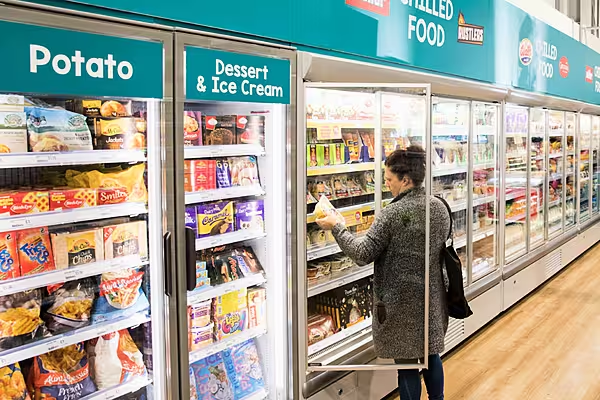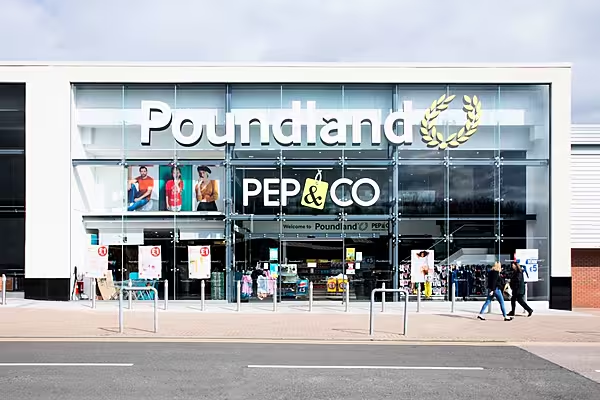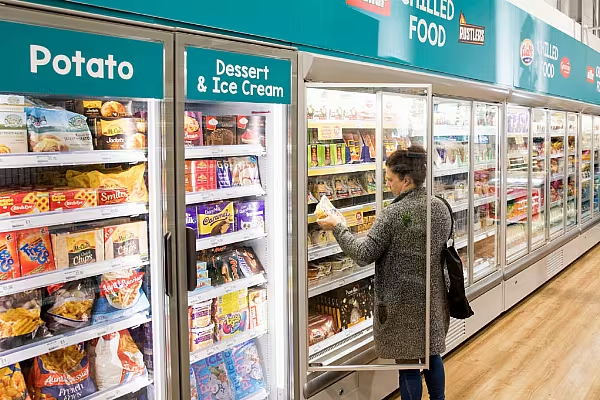It's zombies versus ghouls on the British high street. Or more to the point, discount shops and big grocers. They're both headed for a fright.
Halloween, long a U.S. retail tradition, has become the third-biggest event for U.K. store chains, after Christmas and Easter.
But another trend has followed it across the Atlantic.
In the U.S., customers are picking up more goods on the cheap from discount shops or online retailers, including Amazon.com Inc. For instance, Dollar Tree Inc. is hawking Halloween masks, Ninja Turtle Shells, and princess crowns for $1 each. That's a lot less than the $30 average costume price, according to the National Retail Federation.
In the U.K., when it comes to Halloween, low prices trump every other consideration for consumers, according to retail research group Conlumino Ltd. No wonder they're flocking to pound shops for their plastic pumpkins and glow-in-the-dark skulls.
Asda -- which has used its Wal-Mart Stores Inc. parentage to steal a march on rivals -- is still the most popular source for the majority of Halloween products, according to Conlumino.
But London-listed discounter B&M and privately owned Home Bargains entered the top 10 most-used retailers in some categories for the first time in 2015. German cut-price supermarkets Aldi Stores Ltd. and Lidl Ltd. also grew last year, Conlumino found. It's bad news for the big grocers, who've paid more attention to Halloween over the past five years.
And the timing of Halloween is also troublesome for Britain's top supermarkets. Those toy rats and spooky cupcake cases will be ranged alongside Christmas decorations and reindeer antlers for pets. So pound shops tempting customers for Halloween might encourage them to come back a few weeks later.
This seasonal triumph for the discount sector could then run out. They're already battling market saturation -- some 22 U.K. towns saw a net reduction in the number of discount stores in 2015, according to the Local Data Company, suggesting the fallout from peak tat has started.
But more worryingly, there's a ghostly figure from the past knocking on the door -- inflation.
Many of the products they sell come from suppliers in Asia, who are paid in dollars. The pound's slump inevitably means higher sourcing costs, and when price is the main attraction, it's harder to charge more. Stores can seek to offset some of the currency pressure through better deals from suppliers, or by re-engineering products to put eight crayons in a pack rather than 10, for example. But if this fails, that means pressure on margins.
Prices for about 40 percent of the products that B&M European Value Retail SA buys are linked to the dollar. It's around half for Poundland Group Plc. Both are hedged for now, but that won't last forever. B&M, for example, is protected from the currency moves until the end of December.
So-called fixed price retailers, such as Steinhoff International Holdings NV-owned Poundland and TPG Capital Management-owned Poundworld, are more exposed. While Poundland is accelerating its expansion into formats that can charge more than one pound, and Poundworld already owns multi-price arm Bargain Buys, these can't solve the whole problem.
B&M should be better positioned. It is not tied to a particular price point. But it has its own challenges -- its push to move from about 500 U.K. stores to 850 in the next five years is already cannibalizing existing outlets, and same-store sales growth has slowed. The shares have fallen 29 percent over the past year. The worst might not be over.
Of course, the pound shops should have a natural hedge: if consumers get squeezed by inflation racing ahead of wage growth, they may trade down. But that's by no means guaranteed.
For all the cheap skeleton lights and fake gore, the pound shops' real fright night may be yet to come.
This column does not necessarily reflect the opinion of Bloomberg LP and its owners.
News by Bloomberg, edited by ESM. To subscribe to ESM: The European Supermarket Magazine, click here.














